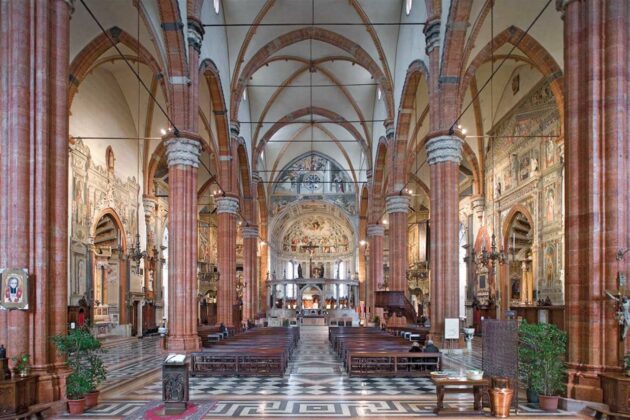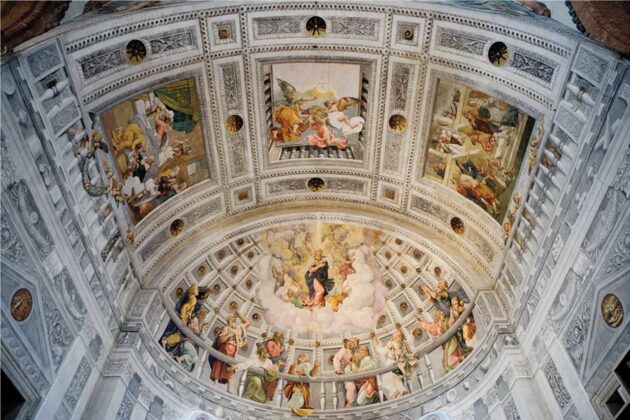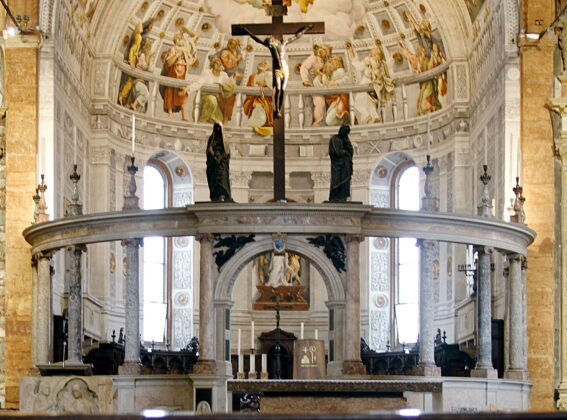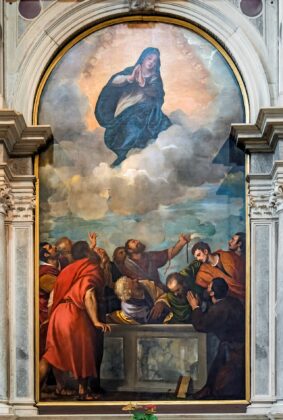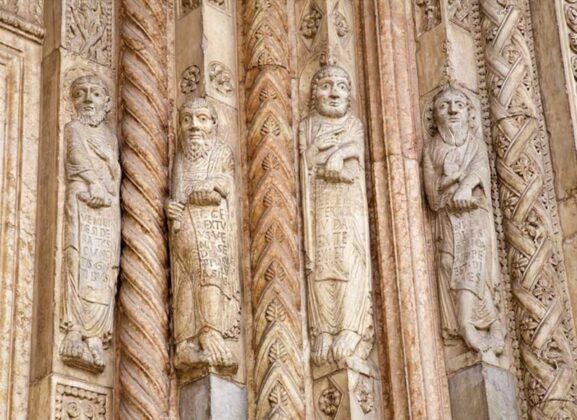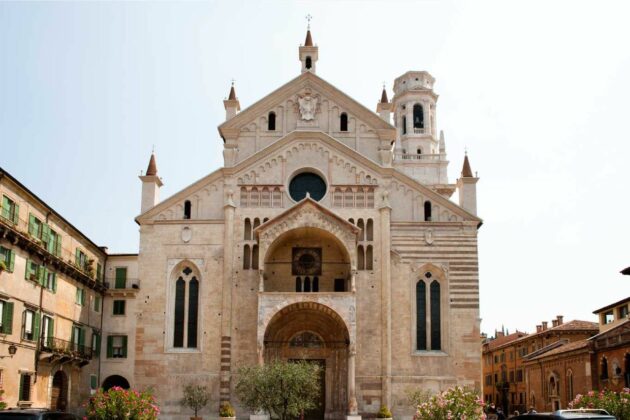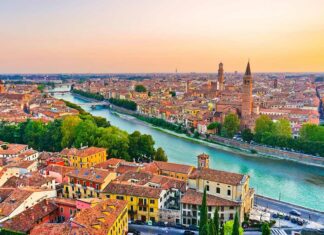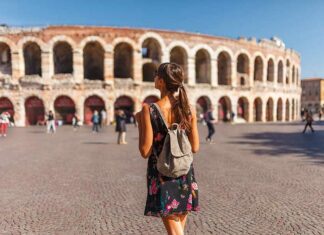Verona Cathedral, of early Christian origin, is part of an architectural complex that includes three other religious buildings: San Giovanni in Fonte, Sant’Elena and the cloister of the canons.
The church stands on the site where the city’s first Christian church was built in the 4th century by San Zeno (bishop of Verona between 362 and 380). It was then consecrated in 1187 by Pope Urban III and dedicated to Santa Maria Assunta.
Over the centuries, the building has undergone numerous interventions, aimed at increasing its structure and improving its forms. The original church, which had three naves with a presbytery and baptistery, was flanked in the 5th century by a second, larger ‘matricolare church’. These structures, razed to the ground by the 1117 earthquake, were then rebuilt in the form of the present cathedral.
Noteworthy architectural features include the 16th-century façade, a singular fusion of Romanesque and Gothic styles, and the unfinished bell tower: according to tradition, it was not finished so as not to exceed the height of the Lamberti Tower, which was to remain the most imposing building in the city!
The majestic and solemn interior of Romanesque design is striking due to the depth of the nave and the presence of frescoes and red Verona marble, chapels, altars and three pipe organs. The church contains Renaissance trompe l’oeil frescoes and the famous painting ‘Assumption of the Virgin’ by Titian (1535).
Duomo di Verona, a Treasured Cathedral
enable geolocation to display your position


